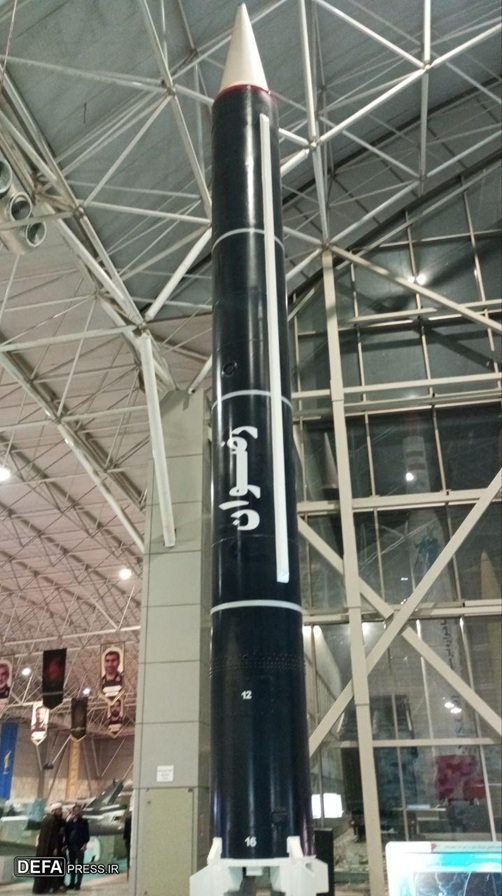Radwan Ballistic Missile: The IRGC Aerospace Force's Trump Card
TEHRAN (Defapress) - The outbreak of various wars in the West Asian region has prompted countries in the region to take necessary measures to strengthen their military and combat capabilities, including the use of strategic weapons to enhance their military power.

Alongside this, the Zionist regime's 12-day imposed war against Iran made Iran more determined than ever to strive towards strengthening its defensive capabilities. On this path, the production of precise-strike hypersonic ballistic missiles was placed on the agenda of the Armed Forces of the Islamic Republic of Iran.
Recently, the IRGC Aerospace Force unveiled a missile at its achievements exhibition that can destroy predetermined targets deep within the occupied territories, in strategic cities such as Tel Aviv, Haifa, and Be'er Sheva.
This missile, which is known as one of the "Israel-striker" missiles, can traverse the distance between Iran and the occupied territories in a short time and smash intended targets such as air bases and military, intelligence, and security centers.
The Radwan missile, which was recently publicly displayed at the IRGC Aerospace Force's achievements exhibition, has a range of approximately 1,400 kilometers. Its warhead can penetrate enemy missile defense systems through high-speed diving maneuvers.
The aforementioned missile features a separable warhead and is used to destroy the enemy's vital targets. Another notable point is the missile's length of approximately 12 meters and a diameter of 0.88 meters, dimensions similar to the Qiam missile. However, the range of this missile has increased by about 500 kilometers compared to the Qiam missile, indicating a significant improvement in quality and the enhancement of various systems, such as the Radwan's fuel and engine.

One of the most important characteristics of the Radwan ballistic missile, in addition to its high speed, is its devastating destructive power. Military experts and analysts believe the mentioned missile has a destructive radius of about one hundred meters, capable of completely destroying dozens of military complexes within this radius.
Reports indicate that the officials of the Resistance Axis in Yemen have also drawn inspiration from this powerful missile and have upgraded their own missiles. Foreign field sources claim that Yemen's Zolfaghar missile is an optimized version of the Kheibar-shekan or Radwan missile, with a range of over 1,400 kilometers and a speed of over Mach 4.
However, a difference between the Zolfaghar and the Kheibar-shekan or Radwan missiles is the type of fuel used in them. According to Heinz, a defense affairs analyst, the Zolfaghar missile uses liquid fuel, whereas the Kheibar-shekan missile uses solid fuel. The warhead of the Kheibar-shekan missile weighs about half a ton, and the total weight of the missile is approximately four and a half tons. While the weight of the Zolfaghar missile is not yet specified, it could be around this figure. Furthermore, field sources believe the Zolfaghar missile also has some structural similarities with the Iranian Radwan missile, which is the optimized model of the Qiam ballistic missile.
The Islamic Republic of Iran has demonstrated that it has plans for future wars as well, and through the mass production of ballistic missiles, it can deliver severe blows to the Zionist enemy.
Some foreign media claim that Iran's missile manufacturing factories are working around the clock, without interruption, so that in case of another foolish act by the Zionist regime and the start of another war, they can fire more than two thousand missiles simultaneously towards the occupied territories. The veracity of this claim is unclear. However, it is certain that Iran has learned many lessons and gained much experience from the 12-day war, and it has undoubtedly accumulated greater power for a potential renewed battle with the Zionist regime and its allies, both in defensive and offensive phases.
